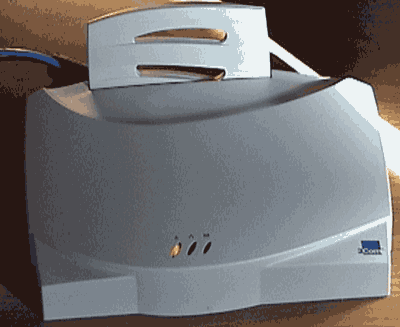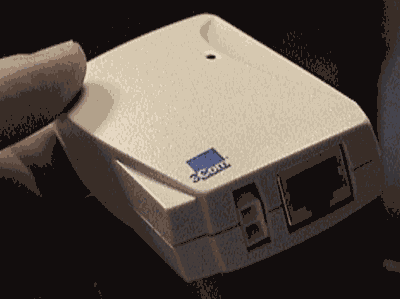A few months ago, I decided to add wireless capabilities to my home network. You see, my computers are all in the basement, and my wife tends to get upset if I spend too much time down there. Besides, why work (or play) in a cold, dark basement, when I can work in my living room, from the comfort of my favorite chair? To make a long story short, wireless networking has totally changed the way I use my computers. In this article series, I’ll explain the benefits of wireless networking. I’ll then go on to show you the hardware required for adding wireless capability to your network. Finally, I’ll discuss the configuration process and some security and performance issues that you’ll face.
Why Go Wireless?
Whether you’re working from home like me, or you work in a huge office, there are many reasons for installing a wireless network. Perhaps the most obvious reason is that in some environments, it’s difficult, if not impossible, to install network cables. This is especially true for temporary networks, such as the type companies often set up at conventions.
Warehouse environments are another prime candidate for wireless networks. I recently assisted a friend with the process of installing a wireless LAN in a large warehouse. My friend’s employees use notebook computers with barcode readers to keep track of inventory. Now, they can update the inventory database in real time through a wireless link as products come and go.
Wireless networks are also great for notebook users in an office environment. Having a wireless LAN in place saves mobile users the hassle of plugging into a docking station every time they want to access the network. Instead, they can access the network from anywhere in the building.
Another use I’ve found for wireless networking is to use a Windows CE-based PDA (personal digital assistant) to manage my servers through a wireless link. I’ve loaded a terminal server client on my Windows CE machine, and I can use this client to access any of my servers at the desktop level, without having to actually go to the server room. (See the CrossLinks sidebar for links to my article series on how to implement this capability.)
The Hardware
OK, so wireless networking is the greatest thing since sliced bread; but you’re probably wondering what’s actually involved in setting up a wireless network. There are several different varieties of wireless networks. For my personal use, I chose the 3Com Air Connect wireless LAN.
The 3Com Air Connect system offers an 11 Mbps network connection that functions very similarly to Ethernet. In fact, it’s totally compatible with existing Ethernet networks. The primary component of the 3Com Air Connect system is a wireless hub, as shown in Figure 1.
 |
This hub provides wireless LAN coverage over a 300 foot (91 meter) radius. Although my hub is sitting on a shelf, the hub is designed so that it can be mounted on a wall or affixed to the ceiling. The diversity of places in which the hub can be mounted is nice, considering that you get better radio reception in some places than others. For example, metal structures such as duct work and steel beams tend to block radio signals. Therefore, it’s important to place the hub in a location in which it can send and receive radio signals without interference. If you do place the hub in a bad position, there’s a good chance that communications will still work, but data transmission speeds and range may suffer as a result. If you have to mount the hub in a less-than-desirable location, the hub has an antenna that you can position for optimal reception, as shown in Figure 1.
I mentioned that the hub is designed to be wall- or ceiling-mounted. However, not many places have power outlets on the ceiling. Fortunately, 3Com has thought of just about everything: The hub includes a device called a PowerBASE-T module. This module, shown in Figure 2, connects to a power outlet at a more convenient location. You can then send power to the wireless hub through a standard CAT-5 cable.
 |
| CrossLinks |
|
Transferring electricity to remote portions of the building isn’t the only thing CAT-5 cables are used for, though. You’ve probably already figured out that the Air Connect hub contains a RJ-45 jack. You can use this jack to connect the Air Connect hub to an existing Ethernet hub, a remote power supply, or both.
This idea may seem strange at first, because I said that the Air Connect hub runs at 11 Mbps and traditional Ethernet hubs run at either 10 Mbps or 100 Mbps. However, the 11 Mbps speed only exists between wireless devices. Any time a wireless device needs to access resources on an Ethernet segment, the Air Connect hub patches the user through the RJ-45 port, where the data speed is slowed to 10 Mbps. This capability enables the Air Connect hub to act as a bridge between wireless users and the Ethernet network.
Conclusion
Now that you know a little about how the hub works, it’s time to explore the client side of wireless networking. In Part 2 (
Connecting Clients to a Wireless Network
), I’ll explain how clients connect to a wireless network. I’ll also discuss the issue of wireless network security. //
Brien M. Posey is an MCSE who works as a freelance writer. His past experience includes working as the director of information systems for a national chain of health care facilities and as a network engineer for the Department of Defense. Because of the extremely high volume of e-mail that Brien receives, it’s impossible for him to respond to every message, although he does read them all.


